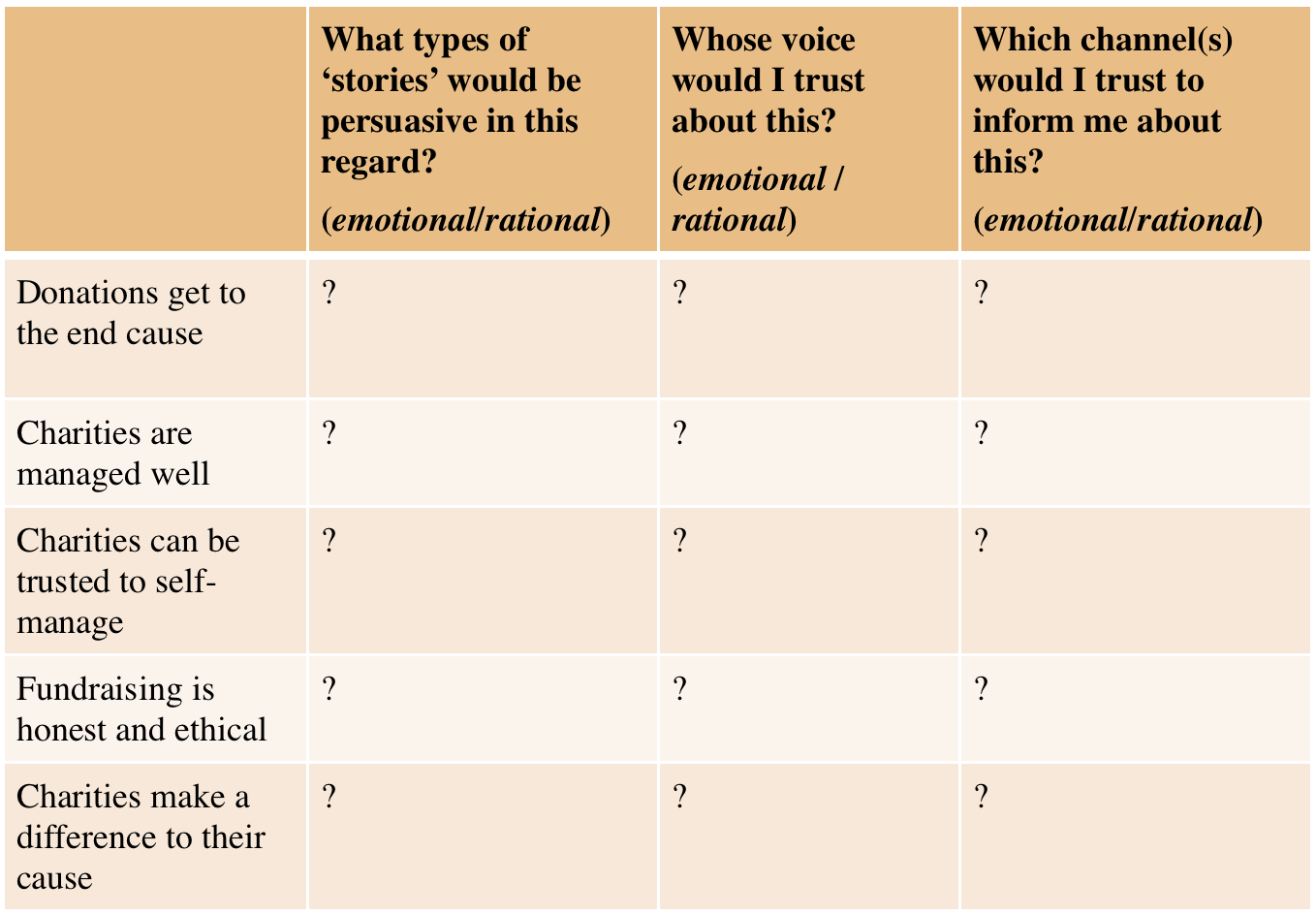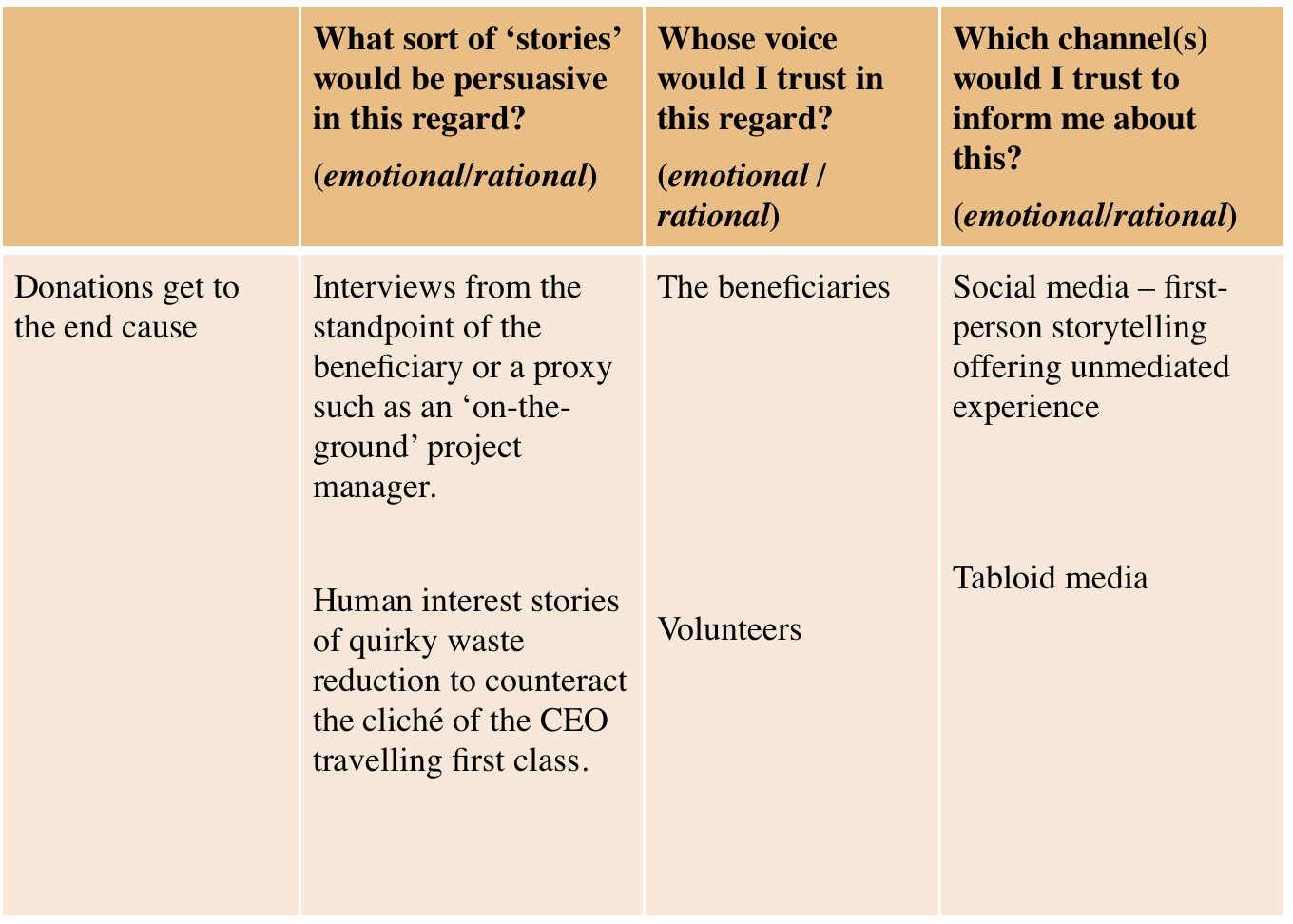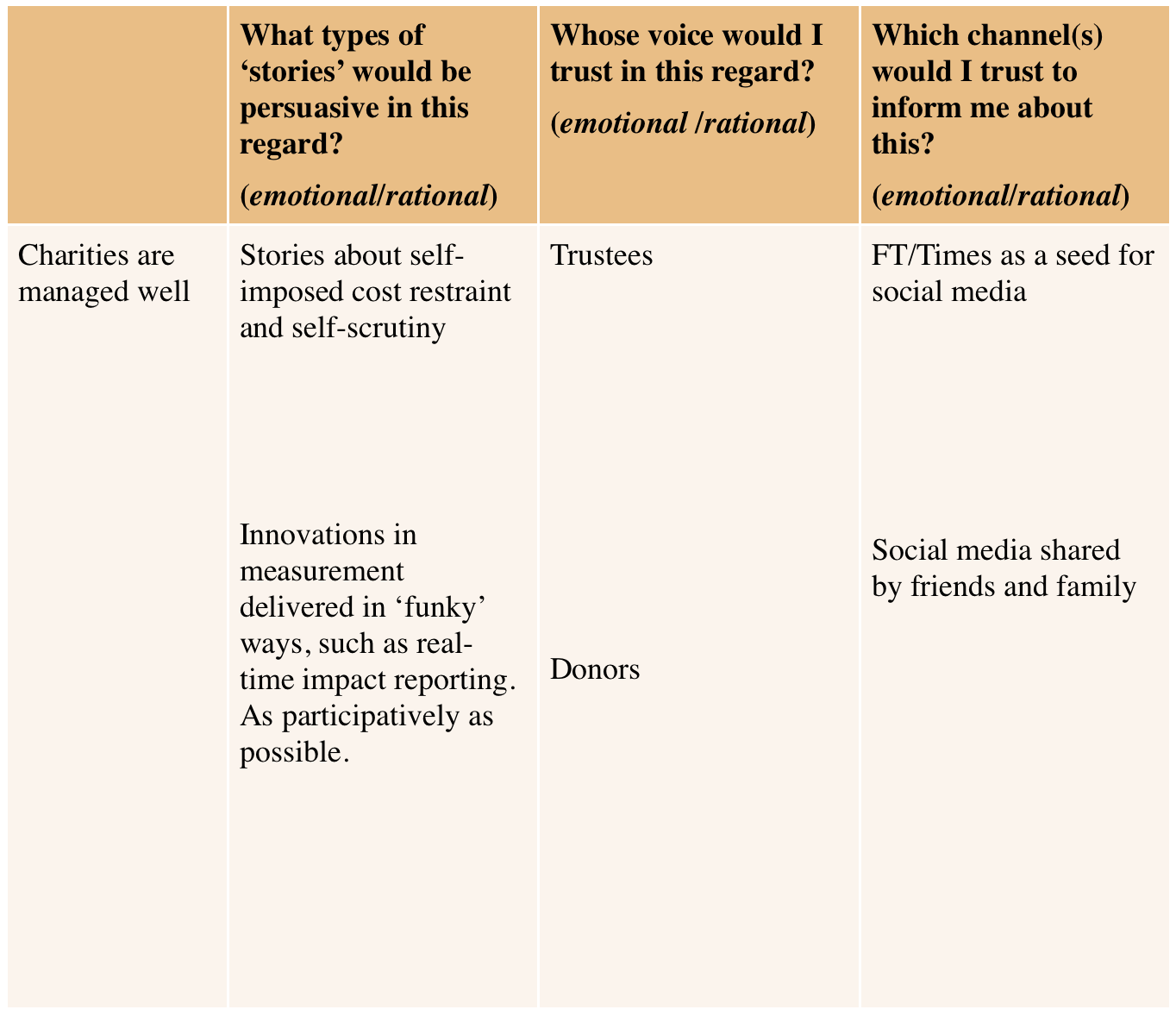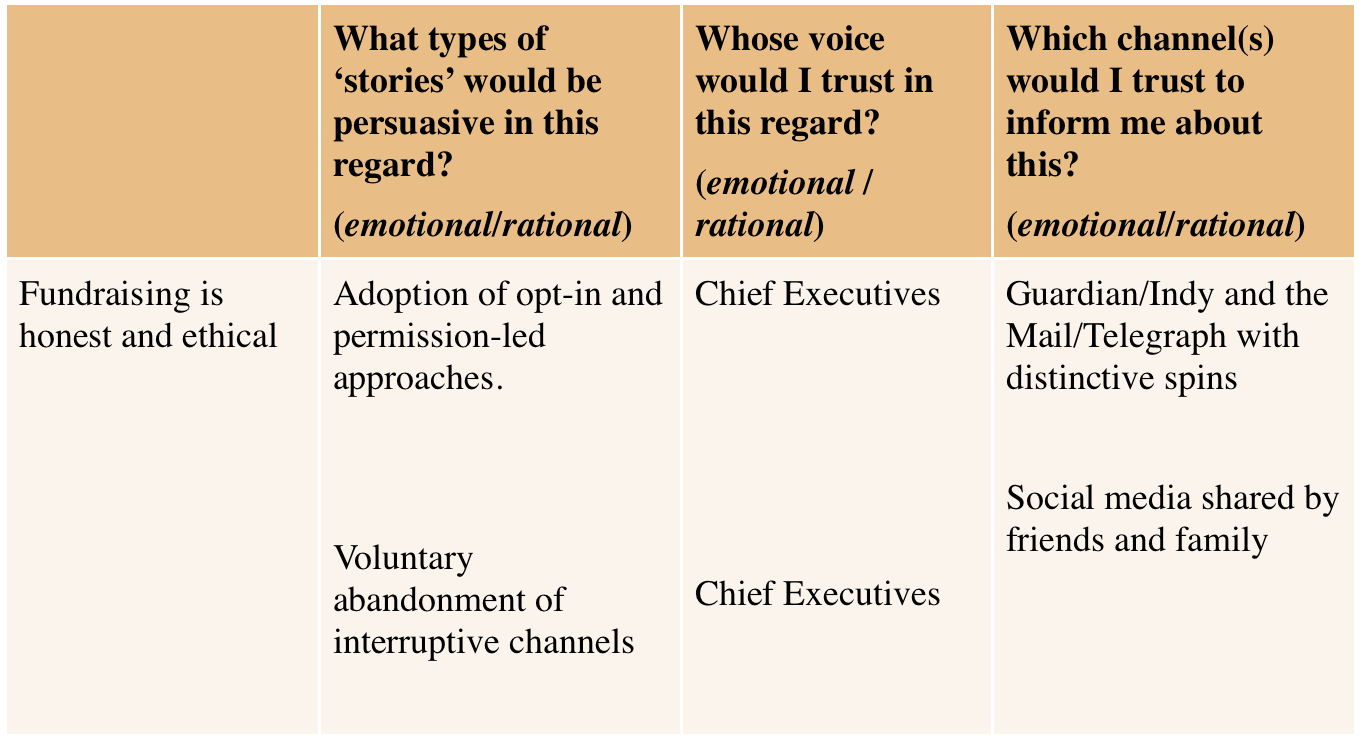CDE project 22: the approach — suggest a new approach
- Written by
- The Commission on the Donor Experience
- Added
- April 24, 2017
In summary, we explored what drives public trust; we acknowledged honestly, through expert input, the innate challenges in justifying that trust, and then analysed the media to understand what types of stories might ‘play’ well.
The following table now brings all these elements together.

On the left of the table are the critical reputation drivers. Against each, we can now ask the following media relations questions:
“Which story would persuade me (as a donor) that charities are doing good things in this area?”
“Who would I like to see as the voice of (or for) the charity?”
Finally, “Which media channel might I trust most to convey this type of message?”
Taking the first question first:

The key principle here is to embrace the need for grass-roots storytelling, in order to liberate the authentic voice of the beneficiary and use it to hold the charity to account, placing it in direct or mediated dialogue with donors.
And the second:

The principle here is that the main thing that conditions the public’s view of a charity’s effectiveness is their first- or second-hand experience of a charity’s conduct. The annual letter telling a supporter that the resale value of their charity-shop donations is a much more compelling experience than are all the negative headlines.
Next:

The principle here is that ‘prosecutions’, fines or censorship will merely lead to an abiding sense of institutional untrustworthiness (see PPI, LIBOR-fixing), and will not provide catharsis for the ‘customer’. The best way to cauterise misdeeds is to take rapid, individual and personal responsibility and to then initiate real change.
Next:

The principle here is that individual charities within the donor’s personal orbit must visibly - and as spontaneously as possible - commit to a demonstrably ethical approach. Commitments embedded in its existing donor journeys will be the most powerful expression of this intent.
Finally:

The principle here is for charities to avoid mission-creep and to take institutional action that shows ‘purity of purpose’. For example, the decision of the Children’s Society to focus predominantly on teenage children represents strategic clarity at its best, and shows clear organisational intelligence in the competitive child welfare market.
The relative woolliness of some other charity brands, particularly in the development and environmental spaces, or in social care, clearly shows the converse problem.
This concludes the explanation of the formal analytical work undertaken as part of Project 22.


















